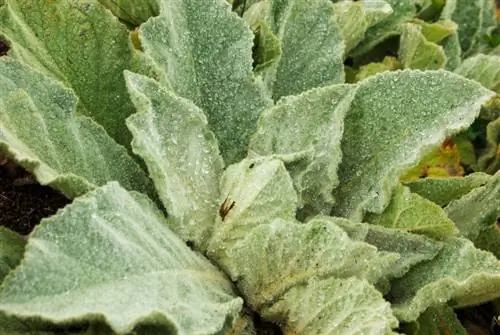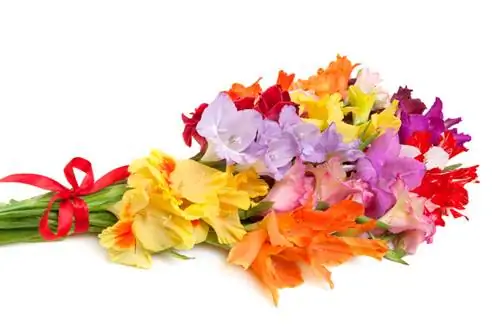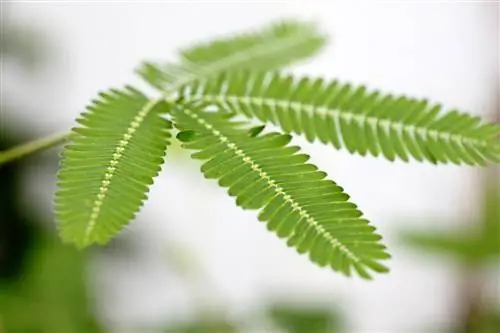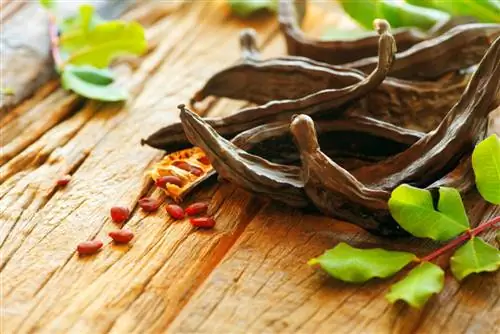- Author admin [email protected].
- Public 2023-12-16 16:46.
- Last modified 2025-01-23 11:20.
The mullein (Verbascum) not only occurs wild on many railway embankments and in gravel pits, but nowadays it is also often specifically planted in gardens due to its impressive flowers. The specially shaped leaves have given the mullein some of its colloquial names.
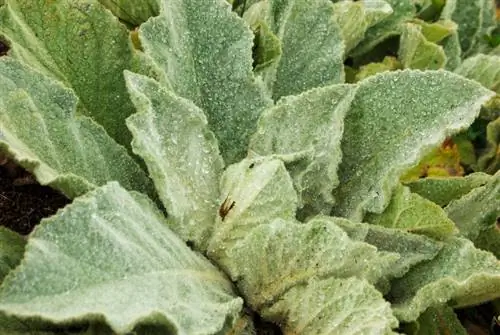
What are the leaves of the mullein known for?
The leaves of the mullein (Verbascum) are hairy with grayish yellow star hairs, which serve as protection against sunlight and evaporation. In natural medicine they are used to relieve colds, asthma and stomach and intestinal problems.
Different names for a traditional garden plant
The mullein has been specifically cultivated in monasteries and cottage gardens for centuries due to its potential uses in traditional natural medicine. Hildegard von Bingen already described the positive effects of the ingredients contained in the flowers and leaves in her treatises. Over the centuries, this plant, which has magnificent flowers even in its wild form, has become popular with a variety of names:
- Thunder and Lightning Candle
- Kunkel
- Skyfire
- Fiend Candle
- Weather Candle
- Winterblom
- Wool weed or wool flower
The special function of the leaves of the mullein
The name “wool flower” or “wool herb” is due to the hairiness of the leaves of the mullein. This hairiness of the leaf rosettes with grayish yellow star hairs acts as protection against strong sunlight and against evaporation. Additionally, the leaves are usually arranged around the stem in such a way that rainwater that hits the leaves is drained directly to the base of the plant. Overall, the wool-like leaves are one of the prerequisites for mullein to thrive even in extremely hot and dry locations without any special care.
The use of the leaves in natural medicine
For use in natural medicine, not only are the petals plucked, but the leaves are also harvested from the leaf rosettes near the ground. So that they dry faster and do not get moldy while drying, you should cut the leaves in the late morning of a dry summer day. In some cases, extracts and inhalation mixtures are made from mullein using high-quality oils, but brewing tea from the well-dried leaves is more common.
Tips & Tricks
The leaves of the mullein are used in gentle natural medicine for various purposes: They are said to have a beneficial effect on colds and asthma, but also in the treatment of stomach and intestinal problems. If you are unsure about identifying plants, you can also get ready-made tea mixtures from the pharmacy under the name “Verbasci flos”.

